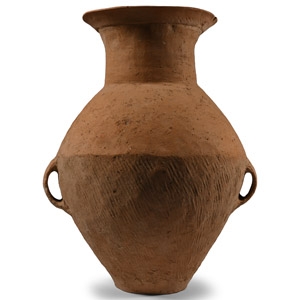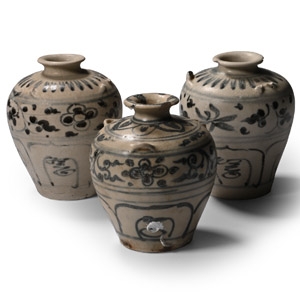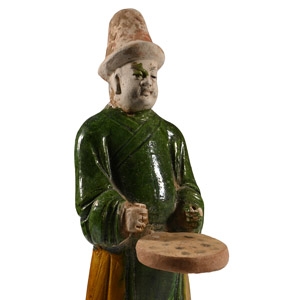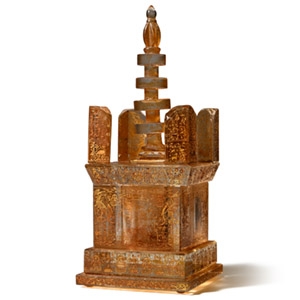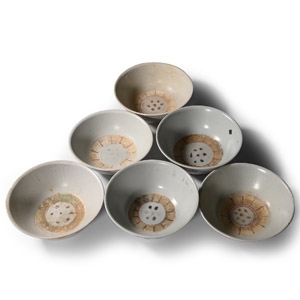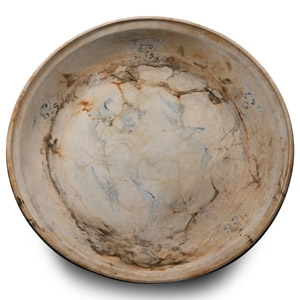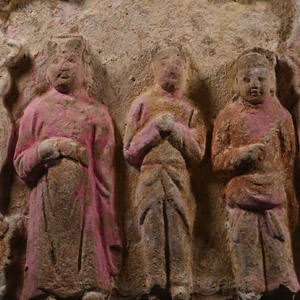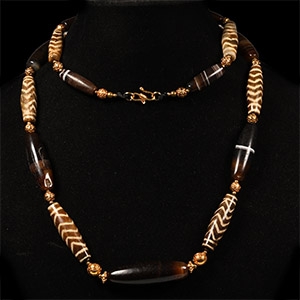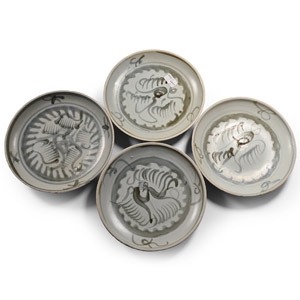Home > Auctions > 3 - 11 June 2025
Ancient Art, Antiquities, Books, Natural History & Coins
Ex Hong Kong collection, 1990s.
This lot is accompanied by an illustrated lot declaration signed by the Head of the Antiquities Department, Dr Raffaele D'Amato.
Ex Butterfield and Butterfield auction with official Hoi An Hoard labels.
Accompanied by an illustrated information sheet about the Hoi An shipwreck.
This lot is accompanied by an illustrated lot declaration signed by the Head of the Antiquities Department, Dr Raffaele D'Amato.
Cf. Guy, J.S., ‘The Hoi An (Cu Lao Cham) Shipwreck Cargo and Asian Ceramic Trade’ in Li, G., Ki Wan, C., Proceedings of the International Conference: Chinese Export Ceramics and Maritime Trade, 12th – 15th centuries, Hong Kong, 2005, pp.105-125, figs.6-7 for similar storage jars.
In the mid 15th century a freighting junk loaded with fine Vietnamese pottery sank in an area of the South China Sea called the 'Dragon’s Embrace.' This vessel is part of the shipwreck cargo recovered off the coast of Vietnam at Hoi An. The ceramics themselves were probably made in the area of Chu Dau.
Ex H.N. collection, Milton Keynes, UK, 1990s.
This lot is accompanied by an illustrated lot declaration signed by the Head of the Antiquities Department, Dr Raffaele D'Amato.
China provides some of the earliest traces of music making. These are mainly in the form of well-preserved musical instruments, the tangible evidence of music. Over several millennia, musical instruments from regional indigenous traditions as well as from India and Central and West Asia were assimilated into the mainstream of Chinese music. Some of the most ancient instruments have been retained, transformed, or revived throughout the ages and many are in common use even today, testifying to a living legacy of a durable art. This legacy is frequently celebrated in the visual arts of China, documenting rituals and celebrations, or as status symbols of those whose lives were enhanced by the resonate sounds of instruments. Ancient Chinese people believed they would go to an afterlife when they died. So they placed miniature versions of things for everyday use in tombs for the deceased, such as these musicians, hoping that the dead could enjoy the next life like when they were alive. These grave objects gradually developed into funerary artworks and reflected the social standing of the deceased.
Ex Hong Kong collection, 1990s.
This lot is accompanied by an illustrated lot declaration signed by the Head of the Antiquities Department, Dr Raffaele D'Amato.
Ex H.N. collection, Milton Keynes, UK, 1990s.
This lot is accompanied by an illustrated lot declaration signed by the Head of the Antiquities Department, Dr Raffaele D'Amato.
From the family collection of a Hampstead gentleman; formerly acquired in the 1980s.
This lot is accompanied by an illustrated lot declaration signed by the Head of the Antiquities Department, Dr Raffaele D'Amato.
Ex Nagel Auction, with official Tek Sing Treasure labels to verso.
Accompanied by an illustrated information sheet about the Tek Sing shipwreck.
This lot is accompanied by an illustrated lot declaration signed by the Head of the Antiquities Department, Dr Raffaele D'Amato.
The Tek Sing (True Star) wreck is one of the famous recovery stories of the 20th century. Sailing from the port of Xiamen (then known as Amoy) in February 1822 the vessel Tek Sing was bound for Jakarta, Indonesia laden with porcelain goods and 1600 Chinese emigrants. The captain decided to pass through the Gaspar Strait, between the Bangka-Belitung Islands, and ran aground on a reef. The vessel sank in about 100 feet of water. The next morning, February 7, an English East Indiaman captained by James Pearl, passing through the same waters, encountered debris and some survivors and managed to rescue about 190 of the latter.
Ex Butterfield and Butterfield auction with official Hoi An Hoard labels.
Accompanied by an illustrated information sheet about the Hoi An shipwreck.
This lot is accompanied by an illustrated lot declaration signed by the Head of the Antiquities Department, Dr Raffaele D'Amato.
In the mid 15th century a freighting junk loaded with fine Vietnamese pottery sank in an area of the South China Sea called the 'Dragon’s Embrace.' This vessel is part of the shipwreck cargo recovered off the coast of Vietnam at Hoi An. The ceramics themselves were probably made in the area of Chu Dau.
From a West Country collection, UK, 1990s.
This lot is accompanied by an illustrated lot declaration signed by the Head of the Antiquities Department, Dr Raffaele D'Amato.
From the family collection of a Hampstead gentleman; formerly acquired in the 1980s.
This lot is accompanied by an illustrated lot declaration signed by the Head of the Antiquities Department, Dr Raffaele D'Amato.
Ex Nagel Auction, with official Tek Sing Treasure labels to verso.
Accompanied by an illustrated information sheet about the Tek Sing shipwreck.
This lot is accompanied by an illustrated lot declaration signed by the Head of the Antiquities Department, Dr Raffaele D'Amato.
The Tek Sing (True Star) wreck is one of the famous recovery stories of the 20th century. Sailing from the port of Xiamen (then known as Amoy) in February 1822 the vessel Tek Sing was bound for Jakarta, Indonesia laden with porcelain goods and 1600 Chinese emigrants. The captain decided to pass through the Gaspar Strait, between the Bangka-Belitung Islands, and ran aground on a reef. The vessel sank in about 100 feet of water. The next morning, February 7, an English East Indiaman captained by James Pearl, passing through the same waters, encountered debris and some survivors and managed to rescue about 190 of the latter.
Ex West Country, UK, collection, 1990s.
This lot is accompanied by an illustrated lot declaration signed by the Head of the Antiquities Department, Dr Raffaele D’Amato.
This lot is accompanied by an illustrated lot declaration signed by the Head of the Antiquities Department, Dr Raffaele D'Amato.
1561 - 1572 of 3130 LOTS

